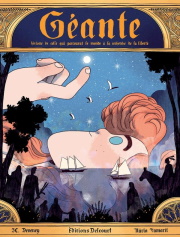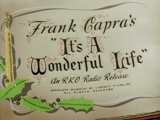Giantess
February 7, 2021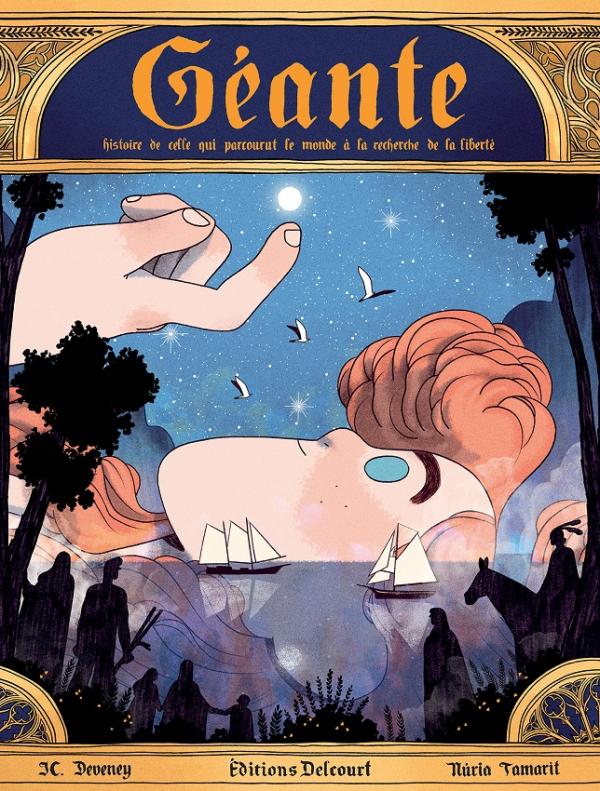
Writer: J.C. Deveney
Art: Nuria Tamarit
Publisher: (in english: Magnetic Press; in french :Delcourt)
Céleste is a found and welcomed baby for a couple of farmers that never had any daughter. After six boys all different from each other, Celeste is a real change. The other odd thing is that she’s almost three times the thickness of her father and almost twice his size while still being a baby. A really big baby.
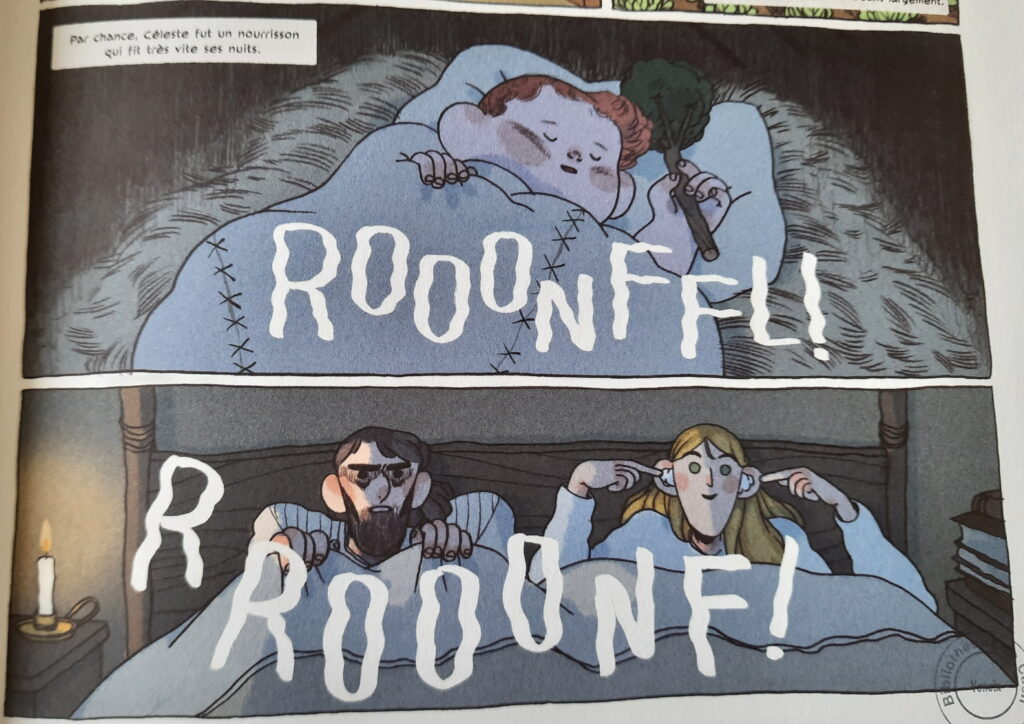
Fortunately, living in the middle of nature and quite far from other men, she does not fear much. Neither to frighten, nor to commit some stupid things which, given his size, could be disastrous. It is as a teenager that she meets a street vendor who actually happens to be a crook. She believes him as he says he knows other giants and that he wants to introduce them to her. Too happy not to be one of her kind, the young girl follows him which will trigger many worries but also start a very special destiny.
Géante a gigantic and great book. Including almost 200 pages, this epic story will give the reader some time to dive into the world of Celeste. Ulysses and his odyssey are mentioned so it indicates roughly at what time all this story happens and links the book to both tales and myths.
Thanks to Celeste’s talents, distances are no longer insurmountable as it could be for a normal human, and the heroine will thus meet very different people and places. If her main motivation is to find her origins, even to find similar people, the book will go much further than that.
Talking about self-acceptance seems to me very limited compared to the message that Géante delivers, even if, in the end, it is indeed this point that Celeste reaches. But Céleste’s development, the questions that invade her mind, her answers whether they are consciously carried out or not, are all that makes this comic book so interesting, while reaching beyond the feminist fight which is of course really present.
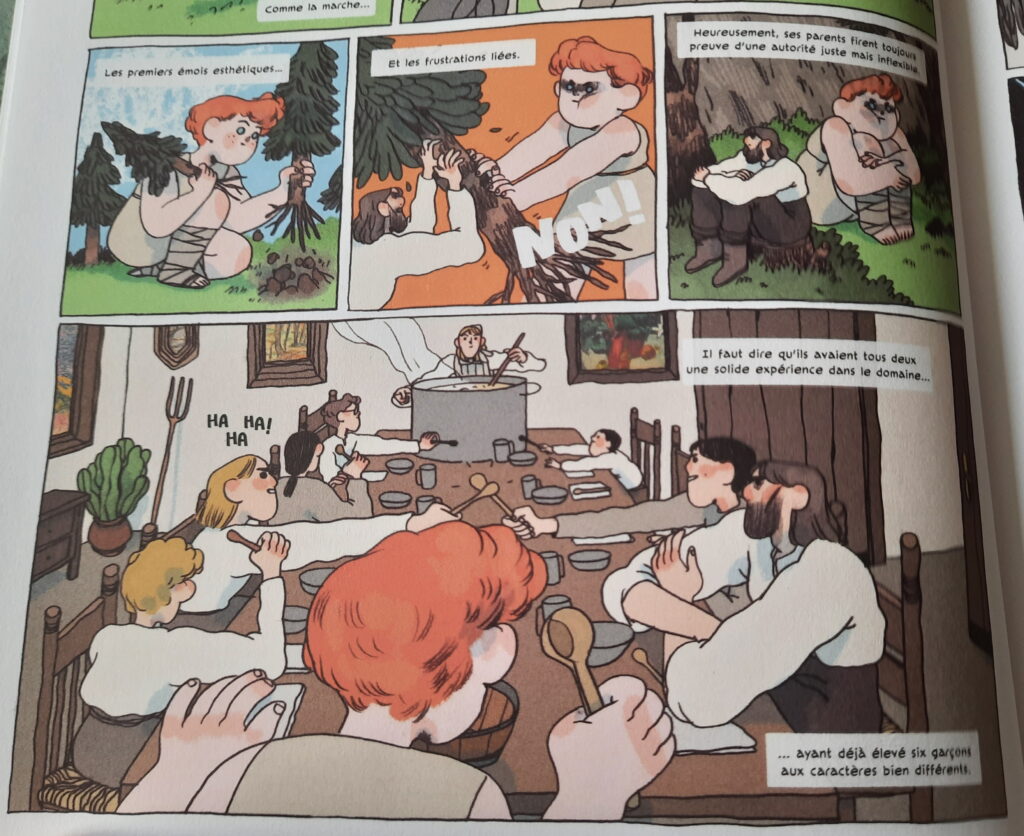
200 pages is no small feat. Still, I read the album in one go. J.C. Deveney’s screenplay is very neat, even if it indulges in a few shortcuts (that are also found in tales, so it’s consistent with the genre), is served by dialogues that hit the mark. There is rhythm, the words are well chosen and the reading of texts and pictures seemed very fluid to me. The narrative texts are also well balanced, not too long, well cut out compared to the panels.
And Géante has no shortage of them. Nuria Tamarit doesn’t hesitate to provide 10 panels in most of the book. If the artist has a line that looks simple, it is handled with strength and talent. The characters are very expressive while their eyes are most often limited to two large circles. The staging and the framing works really well and I particularly appreciated the way in which the artist managed to fit her heroine, so as to make her recognizable while not giving her the majority of the reading space when she was not the main figure in the action.
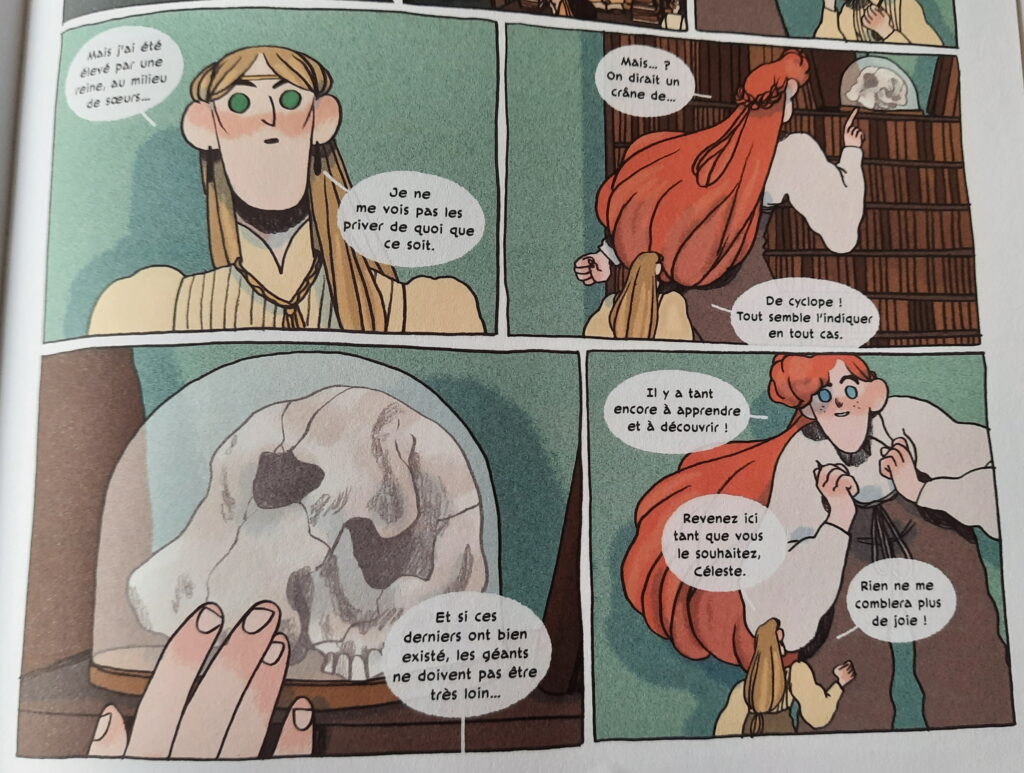
Another point of satisfaction: the variety of characters despite a line that could make them too similar. It doesn’t take much to distinguish one character from another but it absolutely works because at the end of the album, an old character is coming back and I recognized him at first glance. The cover, like the pages that divide the chapters, continues to immerse the reader in this storytelling atmosphere. We are not in the detail of a Bilibin’s painting but we are getting close to it.
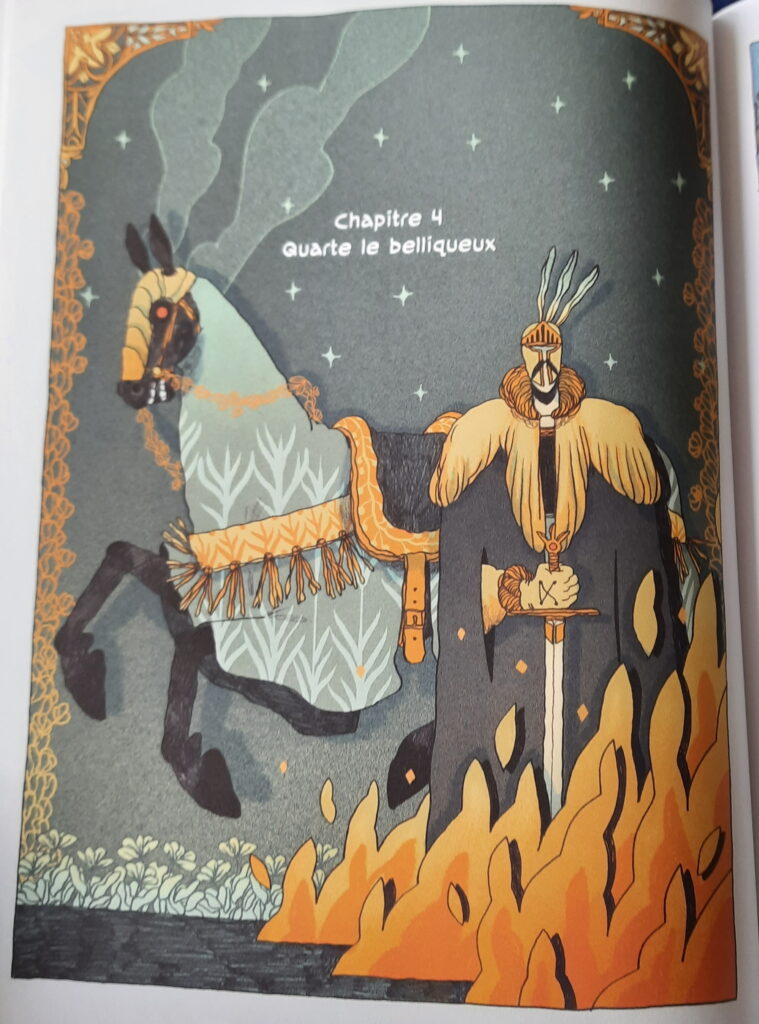
While this album was released around the same time as Peau d’homme and the tones are similar, Géante is just as successful, if not more universal than Hubert and Zanzim’s great comic book because it doesn’t address only to the notion of sex and gender equality. As the subtitle suggests, it’s all about freedom and this wonderful album totally delivers what it promises.

